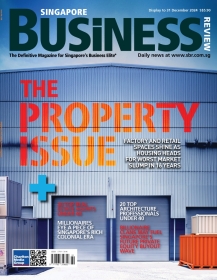
Are Singapore banks scared of dying due to fintech boom? (2/3)
Major banks in Singapore reveal strategies to stay ahead of the pack.
Just as AirBnB and Uber shaken up the hotel and transportation sectors, companies like Alibaba, WeChat, Apple, Tencent are changing the way we pay for products we purchase and services we avail. But while digital disruption may threaten traditional banks, key executives from some major banks in Singapore interviewed by Singapore Business Review argued that it also creates opportunities for those willing to embrace change. After all, traditional banks still have one crucial advantage over disruptors - the element of trust among consumers - as discussed in the first installment of this series.
In this second installment, we bring you their thoughts on how they intend to turn this potential threat into an opportunity.
Sandhya Devanathan, Head of Retail Products, Standard Chartered Bank Singapore
Based on our market research, we have found that customers want a world of perfect payments – one that is faster, more secure and more convenient. To meet this customer demand, Standard Chartered developed DASH together with Singtel based on this insight.
Last year, we launched Dash, an application which reinvents the way person-to-person payments are made through a unique technology that mimics physical cash transfer. It is the only application in the market which integrates the application, use and management of simple retail banking and payment products into a single accessible mobile application.
In this competitive landscape, our ambition is to be customers’ main payment bank for all their digital payments. Faced with an increasingly sophisticated customer base, we have made customer-centric innovation the heart of our strategy, launching multiple first-in-market products and services – this is what sets us apart from competition.
We believe that with technology as the enabler coupled with insightful customer research, we can raise the bar on the service, efficiency and experience as we integrate the needs of customers in developing relevant financial products and services for them.
In the past decade, we have launched multiple first-in-market products in the digital payments space, including Pay-Any-Card, Breeze, our unique security token card and last year, DASH – all of which would have contributed to the overall ecosystem.
Choong Wai Hong, Head of Community Financial Services, Maybank Singapore
From the payment perspective, players like Alipay, WeChat Payment, Applepay, Tencent, and Google wallet fill the gaps between the customer, merchant and the bank. These generally serve the micro-payment solutions for both customers and merchants for online as well as cross-border payments. We believe that there are lots of opportunities for established financial players like Maybank to collaborate with these players on the digital platform, such as by using customer accounts with the bank as the source of funding for payment instructions. This also allows these non-traditional players to leverage on the bank’s infrastructure as well as credibility and security which would also provide more assurance to consumers.
Maybank was the first bank in Singapore to launch a P2P service where payments could be made to any customer with just a mobile number. This has led to almost all the other banks in Singapore launching similar services to the extent that there is currently an industry-wide effort to promote and simplify payments to mobile numbers. Thus, there is an opportunity for new payment services that will simplify and improve customer experience.
Melvyn Low, Citi's Head of ASEAN and Singapore for Treasury and Trade Solutions
The commercial impact of digitising global money flows is substantial and can boost economies in a significant way. A joint 2015 study on Digital Money between Citi and Imperial College London revealed that a 10% increase in digital readiness in 90 countries would result in 220 MM new entrants to the financial system, $ 100 BN increase in tax take, $ 120 BN reduced operating costs in retail, $ 185 BN benefits to governments from less expense disbursements and $ 1 TRN moving into the formal economy.
Across ASEAN, five closely related digital technologies have the potential to unleash some $220 billion to $625 billion in annual economic impact by 2030, according to McKinsey Global Institute. The uptake of smart mobile devices has a big part to play in driving growth this region. GSMA Intelligence estimates that four of the world’s top 15 smartphone markets globally in 2020 will be ASEAN countries, led by Indonesia which is in third place globally with 293 million smartphone connections.
At Citi, we have been extremely active in studying the potential of Digital Money and how we are and should be digitizing them, where their experiential value promises to take us and what security, technology, regulatory and financial considerations they pose along the way. In partnership with Imperial College London, we have been developing leading research on digital money and engaging in active dialogues on progressing digital money.
We are also exploring disruptive new technologies in our Innovation Labs in Singapore and Dublin to unlock the benefits for our clients, and working with FinTech startups through our accelerator and incubator programs to harness digital technologies and uncover new solutions.
























 Advertise
Advertise






